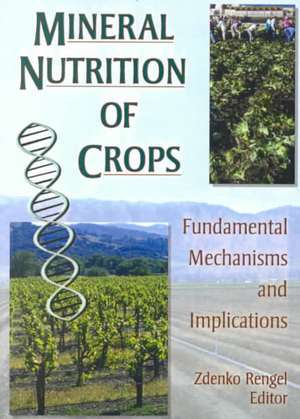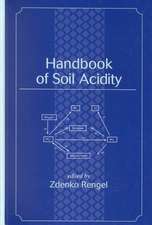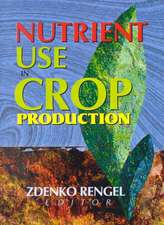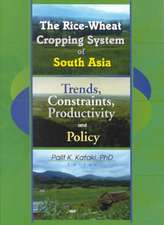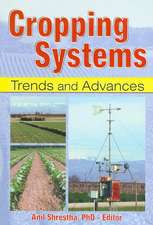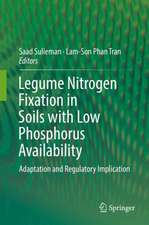Mineral Nutrition of Crops: Fundamental Mechanisms and Implications
Autor Zdenko Rengelen Limba Engleză Paperback – 22 iun 2000
The first book ever to elucidate so many different aspects of mineral nutrition of crops, Mineral Nutrition of Crops: Fundamental Mechanisms and Implications will allow you to grasp the complexity of the soil-water-plant-microbe interactions governing nutrient uptake and utilization by crops. By emphasizing a fundamental mechanistic approach, this book effectively complements the monograph Nutrient Use in Crop Production (The Haworth Press, Inc.). With Mineral Nutrition of Crops you will explore the many facets necessary to increase crop and pasture yields and minimize unwanted losses of nutrients to the environment.
Mineral Nutrition of Crops covers a wide range of topics that span several scientific disciplines: agriculture, agronomy, botany, forestry, ecology, plant science, and soil science. From this book, you will gain vital knowledge required to understand the complexity of mechanisms and processes governing nutrient transport toward roots, including biological and chemical reactions influencing nutrient availability in the rhizosphere, uptake by root cells, long-distance transport toward grain, and the role of nutrients in metabolism. Also, you will explore issues relating to the following topics:
- biology and chemistry of nutrient availability in the rhizosphere
- kinetics of nutrient uptake by plant cells
- role of mineral photosynthesis and yield formation
- importance of seed nutrient reserves in crop growth and development
- breeding crops for improved nutrient efficiency
- significance of root size for plant production
- monitoring water and nutrient fluxes down the profile
Preț: 447.67 lei
Preț vechi: 526.67 lei
-15% Nou
Puncte Express: 672
Preț estimativ în valută:
85.67€ • 93.03$ • 71.96£
85.67€ • 93.03$ • 71.96£
Carte tipărită la comandă
Livrare economică 23 aprilie-07 mai
Preluare comenzi: 021 569.72.76
Specificații
ISBN-13: 9781560229001
ISBN-10: 1560229004
Pagini: 414
Dimensiuni: 152 x 229 x 22 mm
Greutate: 0.56 kg
Ediția:1
Editura: CRC Press
Colecția CRC Press
ISBN-10: 1560229004
Pagini: 414
Dimensiuni: 152 x 229 x 22 mm
Greutate: 0.56 kg
Ediția:1
Editura: CRC Press
Colecția CRC Press
Public țintă
ProfessionalCuprins
Contents About the Editors Contributors , Preface , Chapter 1. Biology and Chemistry of Nutrient Availability in the Rhizosphere , Introduction , Influence of Rhizodeposition on Microbial Ecology , Plant Modifications of Rhizosphere Chemistry , Plant Responses to Micronutrient Deficiencies , Microbial Interactions Influencing Plant Nutrition , Bioaugmentation of the Rhizosphere , Conclusions , Chapter 2. Kinetics of Nutrient Uptake by Plant Cells , Introduction , Transport Mechanisms , Control of Uptake , Enzyme Kinetics and Membrane Transport , Dual Isotherms and Multiphasic Kinetics , Induction and Repression of Transport Systems , Root Structure and Observed Kinetics , Conclusions , Chapter 3. Molecular Biology of Nutrient Transporters in Plant Membranes , Introduction , Isolation of Ion Transporters , Common Molecular Features of Plant Nutrient Transporters , Potassium Transport , Sulfate Transport , Phosphate Transport , Nitrogen Transport , Tools for Physiological Studies , Implications for Agriculture and the Environment , Chpater 4. Long-Distance Nutrient Transport in Plants and Movement into Developing Grains , Introduction , Long-Distance Transport in Xylem and Phloem , Pathway of Nutrient Transport into Developing Grains , Conclusions , , Chapter 5. The Significance of Root Size for Plant Nutrition in Intensive Horticulture , Introduction , The Role of Root Size and Container Volume in Nutrient Uptake , Plant Response to Container Volume and Nutrient Concentrations , Effect of Container Volume and Nitrate Concentration on Nitrogen and Water Uptake Rates , Tomato Response to Root Treatments in Hydroponics , Internal Regulatio
Descriere
Mineral Nutrition of Crops is the first book to grasp the complexity of the soil-water-plant-microbe interactions governing nutrient uptake and utilization by crops. You'll find it establishes a base at the single plant level, takes into account cells as well as plasma membranes of these cells, and then builds from there to include issues related to plant pathology, soil microbiology, soil chemistry, hydrology, breeding, and modeling. An understanding of these topics is paramount to designing sustainable nutrient management in agricultural landscapes as scientists face the challenge of providing food, feed, and fiber for increasing populations on decreasing amounts of agricultural land.
